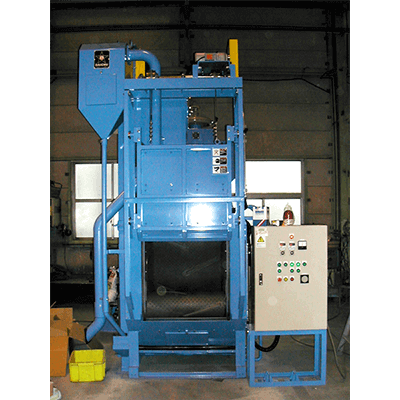What Is Blasting Machinery?

Blasting machinery is machinery that alters the surface condition and composition of a material by propelling an abrasive at high pressure and high speed.
There are different types of blasters, such as sandblasting and alumina blasting, depending on the type of abrasive used, and air blasting and shot blasting, depending on the structure of the jetting.
This technology is indispensable in today’s industry and has a wide range of applications, including processing automobile and airplane parts, strengthening buildings, and pre-treatment for semiconductor bonding.
Uses of Blasting Machinery
There are three main applications for blasting machinery:
- Improvement of Surface Roughness
Specific applications include non-slip treatment and undercoating of paints.
- Improvement of Rigidity
Specific applications include strength enhancement of passenger aircraft bodies and cannonballs in athletics.
- Improvement of Material Surface Cleanliness
Specific applications include rust removal, deburring after cutting, and removal of oxide film, among others.
Principle of Blasting Machinery
A powdery substance is injected at high speed using compressed air produced by a compressor or by an impeller connected to a motor to create an uneven surface on metal, resin, etc. This machine is used to create an uneven surface. Machines that use compressed air are classified as air blasting, while those that use an impeller are classified as shot blasting.
These machines come in various sizes, from large machines that can occupy an entire room to small ones that can fit into a small booth. Shot blasting can also be combined with robots to perform unmanned blasting, or with nozzles that simultaneously suction the sprayed abrasive.
Various surface conditions can be achieved depending on the type of abrasive, the strength of the spray, the nozzle used to inject the abrasive, and the distance from the nozzle to achieve a variety of effects.
Common Abrasive Types:
- Alumina
- Sand, Stone
- Zinc grain
- Iron
Spraying abrasives can slightly grind or abrade the surface of an object.
Spraying an abrasive with an angular shape can create an uneven surface, enhancing friction. This can be applied to prevent slipping on floor treads or to improve paint adhesion, reducing the risk of peeling.
Spherical abrasives can also be sprayed and tapped on the surface to strengthen the metal, akin to forging a blade. This can increase the hardness of the blasted metal, even if it is the same type of metal.
Alternatively, by spraying a fragile abrasive at a relatively low speed, the surface can be cleaned with minimal change in surface roughness. This method is used to remove rust from oxidized surfaces, expose active surfaces, and deburr after cutting.